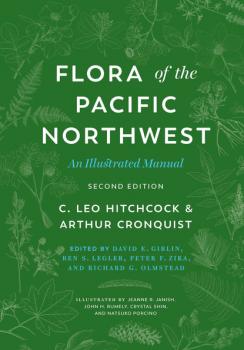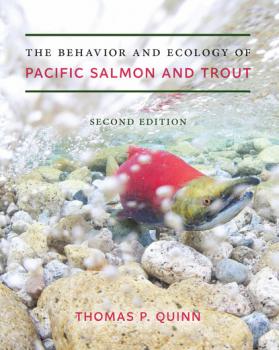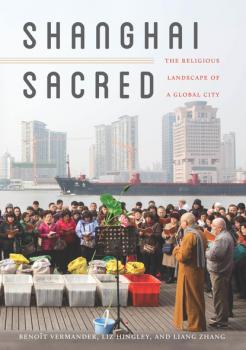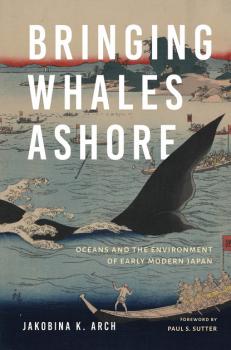Биология
Различные книги в жанре БиологияFlora of the Pacific Northwest
Flora of the Pacific Northwest, first published in 1973, became an instant classic for its innovative style of providing species descriptions in the identification keys, and for its comprehensive illustrations of nearly all treated taxa (species, subspecies, and varieties). Students rely on it as an essential primer, while veteran botanists and natural resource managers use it as the definitive reference for the region�s flora.This completely revised and updated edition captures the advances in vascular plant systematics over the decades since publication of the first edition. These advances, together with significant changes in plant nomenclature, the description of taxa new to science from the region, and the recent documentation of new native and nonnative species in the Pacific Northwest required a thorough revision of this authoritative work.Flora of the Pacific Northwest covers all of Washington, the northern half of Oregon, Idaho north of the Snake River Plain, the mountainous portion of western Montana, and the southern portion of British Columbia. It accounts for the wild-growing native and introduced vascular plants falling within those boundaries and includes:Treatment of 5,545 taxa (more than 1,000 taxa added from the first edition)Illustrations for 4,716 taxa (1,382 more than the first edition)Nomenclature changes for more than 40 percent of the taxa included in the first editionThese enhancements make this new edition the most comprehensive reference on Pacific Northwest vascular plants for professional and amateur botanists, ecologists, rare plant biologists, plant taxonomy instructors, land managers, nursery professionals, and gardeners.
The Behavior and Ecology of Pacific Salmon and Trout
The Behavior and Ecology of Pacific Salmon and Trout combines in-depth scientific information with outstanding photographs and original artwork to fully describe the fish species critical to the Pacific Rim. This completely revised and updated edition covers all aspects of the life cycle of these remarkable fish in the Pacific: homing migration from the open ocean through coastal waters and up rivers to their breeding grounds; courtship and reproduction; the lives of juvenile salmon and trout in rivers and lakes; migration to the sea; the structure of fish populations; and the importance of fish carcasses to the ecosystem. The book also includes information on salmon and trout transplanted outside their ranges.Fisheries expert Thomas P. Quinn writes with clarity and enthusiasm to interest a wide range of readers, including biologists, anglers, and naturalists. He provides the most current science available as well as perspectives on the past, present, and future of Pacific salmon and trout.In this edition:Over 100 beautiful color photographs of salmon and troutUpdated information on all aspects of the salmon and trout life cycleExpanded coverage of trout
Footprints of War
When American forces arrived in Vietnam, they found themselves embedded in historic village and frontier spaces already shaped by many past conflicts. American bases and bombing targets followed spatial and political logics influenced by the footprints of past wars in central Vietnam. The militarized landscapes here, like many in the world�s historic conflict zones, continue to shape post-war land-use politics.Footprints of War traces the long history of conflict-produced spaces in Vietnam, beginning with early modern wars and the French colonial invasion in 1885 and continuing through the collapse of the Saigon government in 1975. The result is a richly textured history of militarized landscapes that reveals the spatial logic of key battles such as the Tet Offensive.Drawing on extensive archival work and years of interviews and fieldwork in the hills and villages around the city of Hue to illuminate war�s footprints, David Biggs also integrates historical Geographic Information Systems (GIS) data, using aerial, high-altitude, and satellite imagery to render otherwise placeless sites into living, multidimensional spaces. This personal and multilayered approach yields an innovative history of the lasting traces of war in Vietnam and a model for understanding other militarized landscapes.
Environmental Justice in Postwar America
In the decades after World War II, the American economy entered a period of prolonged growth that created unprecedented affluence�but these developments came at the cost of a host of new environmental problems. Unsurprisingly, a disproportionate number of them, such as pollution-emitting factories, waste-handling facilities, and big infrastructure projects, ended up in communities dominated by people of color. Constrained by long-standing practices of segregation that limited their housing and employment options, people of color bore an unequal share of postwar America�s environmental burdens.This reader collects a wide range of primary source documents on the rise and evolution of the environmental justice movement. The documents show how environmentalists in the 1970s recognized the unequal environmental burdens that people of color and low-income Americans had to bear, yet failed to take meaningful action to resolve them. Instead, activism by the affected communities themselves spurred the environmental justice movement of the 1980s and early 1990s. By the turn of the twenty-first century, environmental justice had become increasingly mainstream, and issues like climate justice, food justice, and green-collar jobs had taken their places alongside the protection of wilderness as �environmental� issues.Environmental Justice in Postwar America is a powerful tool for introducing students to the US environmental justice movement and the sometimes tense relationship between environmentalism and social justice.
Making New Nepal
One of the most important political transitions to occur in South Asia in recent decades was the ouster of Nepal�s monarchy in 2006 and the institution of a democratic secular republic in 2008. Based on extensive ethnographic research between 2003 and 2015,�Making New Nepal�provides a snapshot of an activist generation�s political coming-of-age during a decade of civil war and ongoing democratic street protests.Amanda Snellinger illustrates this generation�s entr�e into politics through the stories of five young revolutionary activists as they shift to working within the newly established party system. She explores youth in Nepali national politics as a social mechanism for political reproduction and change, demonstrating the dynamic nature of democracy as a radical ongoing process.
Shanghai Sacred
Shanghai, a dynamic world metropolis, is home to a multitude of religions, from Buddhism and Islam, to Christianity and Baha�ism, to Hinduism and Daoism, and many more. In this city of 24 million inhabitants, new religious groups and older faiths together claim and reclaim spiritual space.Shanghai Sacred�explores the spaces, rituals, and daily practices that make up the religious landscape of the city, offering a new paradigm for the study of Chinese spirituality that reflects the global trends shaping Chinese culture and civil society.Based on years of fieldwork, incorporating both comparative and methodological perspectives,�Shanghai Sacred�demonstrates how religions are lived, constructed, and thus inscribed into the social imaginary of the metropolis. Evocative photographs by Liz Hingley enrich and interact with the narrative, making the book an innovative contribution to religious visual ethnography.�
Racial Ecologies
From the Flint water crisis to the Dakota Access Pipeline controversy, environmental threats and degradation disproportionately affect communities of color, with often dire consequences for people�s lives and health. Racial Ecologies explores activist strategies and creative responses, such as those of Mexican migrant women, New Zealand Maori, and African American farmers in urban Detroit, demonstrating that people of color have always been and continue to be leaders in the fight for a more equitable and ecologically just world.Grounded in an ethnic-studies perspective, this interdisciplinary collection illustrates how race intersects with Indigeneity, colonialism, gender, nationality, and class to shape our understanding of both nature and environmental harm, showing how and why environmental issues are also racial issues. Indeed, Indigenous, critical race, and postcolonial frameworks are crucial for comprehending and addressing accelerating anthropogenic change, from the local to the global, and for imagining speculative futures. This forward-looking, critical intervention bridges environmental scholarship and ethnic studies and will prove indispensable to activists, scholars, and students alike.
Gender before Birth
In the mid-1990s, the international community pronounced prenatal sex selection via abortion an �act of violence against women� and �unethical.� At the same time, new developments in reproductive technology in the United States led to a method of sex selection before conception; its US inventor marketed the practice as �family balancing� and defended it with the rhetoric of freedom of choice. In Gender before Birth, Rajani Bhatia takes on the hypocrisy of how similar practices in the first and third worlds are divergently named and framed.Bhatia�s extensive fieldwork includes interviews with clinicians, scientists, biomedical service providers, feminist activists, and international tech advocates, and her resulting analysis extends both feminist theory on reproduction and feminist science and technology studies. She argues that we are at the beginning of a changing transnational terrain that presents new challenges to theorized inequality in reproduction, demonstrating how the technosciences often get embroiled in colonial gender and racial politics.
Bringing Whales Ashore
Today, Japan defends its controversial whaling expeditions by invoking tradition�but what was the historical reality? In examining the techniques and impacts of whaling during the Tokugawa period (1603�1868), Jakobina Arch shows that the organized, shore-based whaling that first developed during these years bore little resemblance to modern Japanese whaling. Drawing on a wide range of sources, from whaling ledgers to recipe books and gravestones for fetal whales, she traces how the images of whales and byproducts of commercial whaling were woven into the lives of people throughout Japan. Economically, Pacific Ocean resources were central in supporting the expanding Tokugawa state.In this vivid and nuanced study of how the Japanese people brought whales ashore during the Tokugawa period, Arch makes important contributions to both environmental and Japanese history by connecting Japanese whaling to marine environmental history in the Pacific, including the devastating impact of American whaling in the nineteenth century.�
Organic Sovereignties
This first sustained ethnographic study of organic agriculture outside the United States traces its meanings, practices, and politics in two nations typically considered worlds apart: Latvia and Costa Rica. Situated on the frontiers of the European Union and the United States, these geopolitically and economically in-between places illustrate ways that international treaties have created contradictory pressures for organic farmers.Organic farmers in both countries build multispecies networks of biological and social diversity and create spaces of sovereignty within state and suprastate governance bodies.�Organic associations in�Central America and Eastern Europe face parallel challenges in�balancing�multiple identities as social movements, market sectors, and NGOs while finding their place in regions and nations reshaped by world events.�









